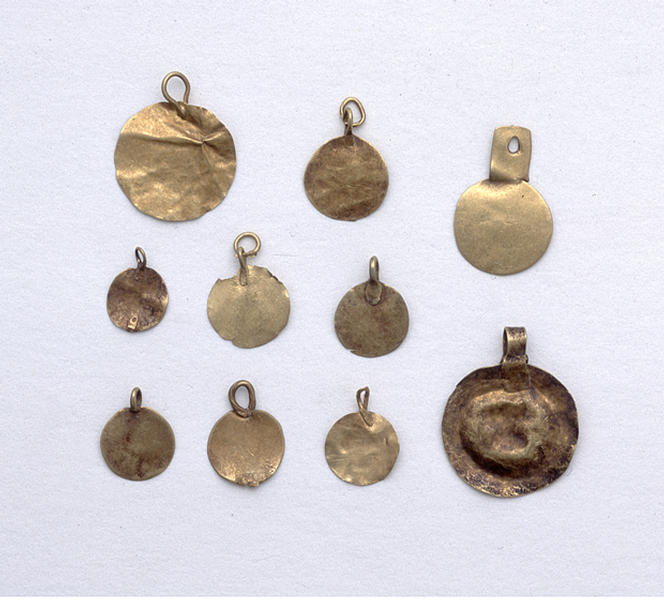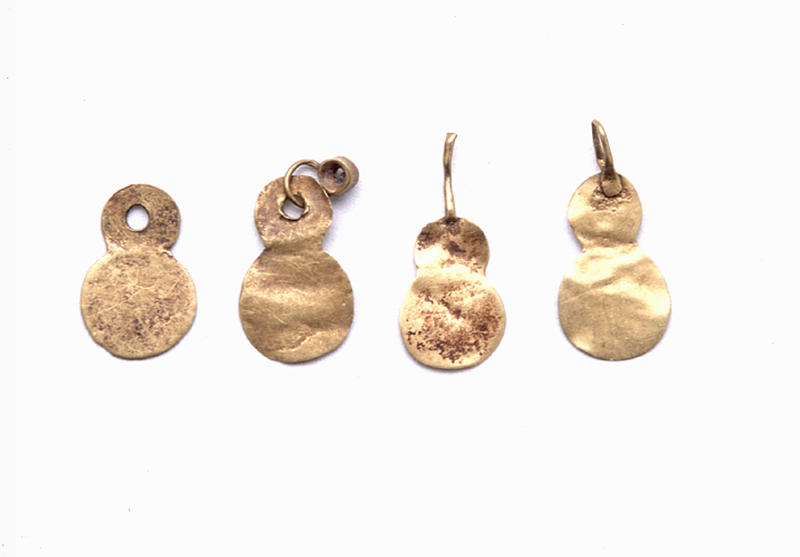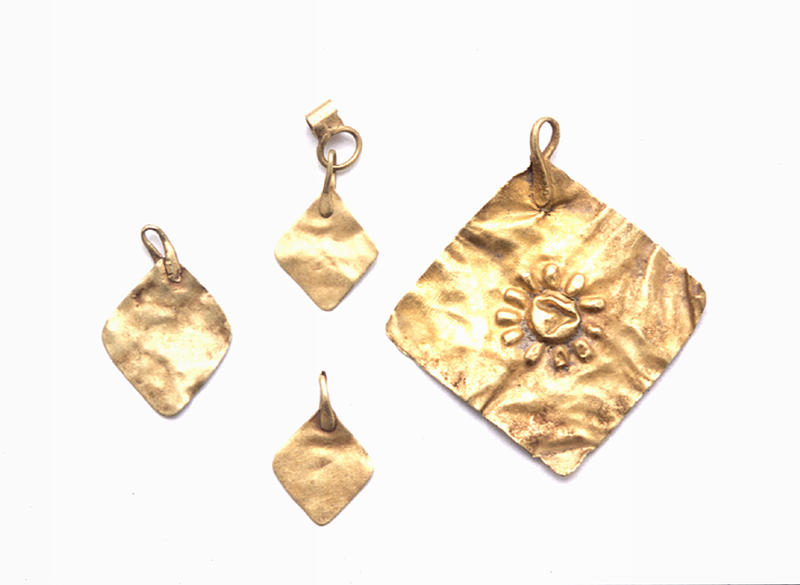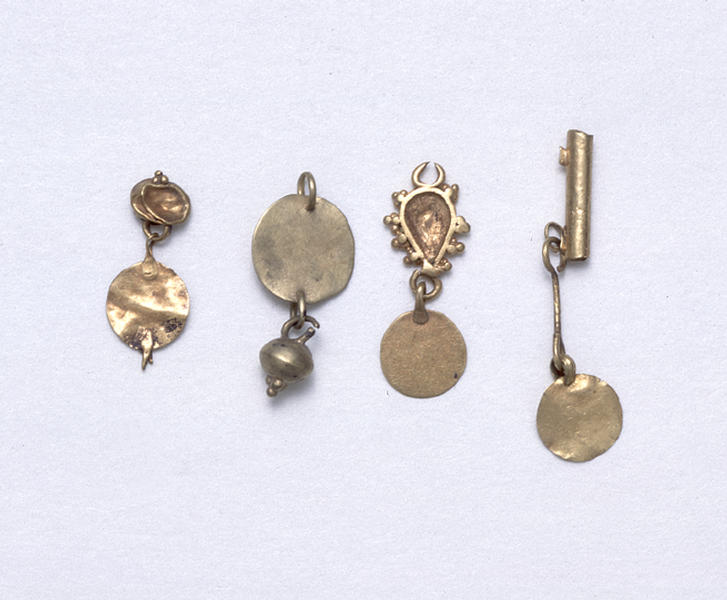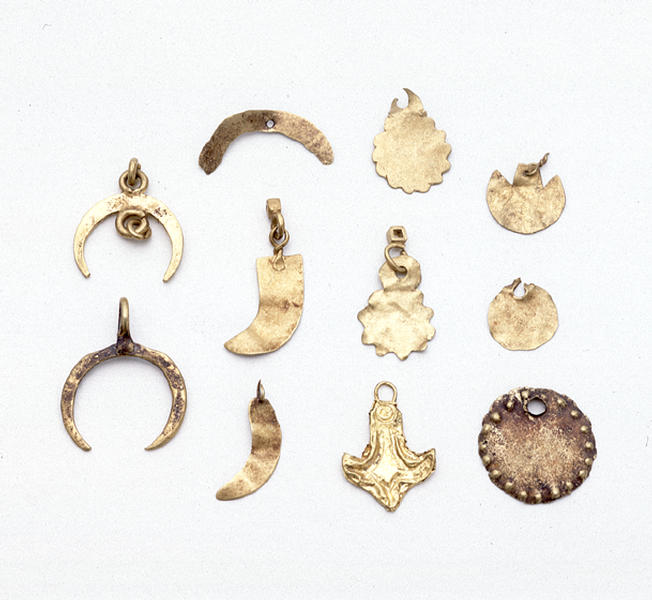ペンダント
- 紀元前3-紀元前2世紀
- 金
解説(古代バクトリア遺宝展)
前3―前2世紀
金
高0.7-2.3 cm 幅0.4-1.9 cm
これらの中には立体のペンダントのシルエットを示しているものも含まれている。太いJ形はエジプトの伝統的なペンダントの意匠であり、横に提げる三日月形はメソポタミアの月の神シンの象徴に通じているのかもしれない。
ビーズ バクトリア遺宝にはビーズがオクサス遺宝に比べ多数かつ多種類含まれている。作品192a-dは球形に細粒装飾を施したもの。作品193は円筒形に細粒装飾を施したもの。作品192f、gは円盤に細粒装飾を施したもの。192h、iは穀粒形のビーズで、hのように連続したものもある。作品194は球形に畝意匠を施したもの。作品195は算盤珠状のビーズである。ビーズの中には形象を表したものがあり、作品192mのライオン頭部形、作品192nの水禽形、作品192o、qの壺形と人物などを組み合わせたものなどがある。作品192mは額に三角形の象嵌のための穴があけられており、この意匠は作品146のトルクの両端に付けられたライオン頭部にも見られるものである。
Catalogue Entry
3rd‐2nd century B.C.
Gold
H. 0.7-2.3 cm, W. 0.4-1.9 cm
Some of these elements would have formed the silhouettes for three-dimensional pendants. The thick J-shaped pendant is a traditional Egyptian pendant design, and the horizontally arranged crescents may symbolize the Mesopotamian moon god, Sin.
Beads
There are more beads, and of greater variety in the Bactrian treasure than there are in the Oxus treasure. Cat. Nos. 192 a-d are ball-shaped and decorated with granules. The beads at cat. No. 193 are tubular and decorated with granules. Cat. Nos. 192 f, g are disks decorated with granules. Cat. Nos. 192 h, I are grain-shaped beads, and there are also examples like Bead 192 h which are connected into sets of grain-shapes. Bead 194 is a ball decorated with grooves. Bead 195 is in the shape of an abacus bead. Some beads are shown in figural form, such as Bead 192 m which is in the shape of a lion's head, Bead 192 n which is in the shape of a waterfowl, and Beads 192 o, q which show a combined figure-water jar shape. There is a triangular hole for inlay in the forehead of the lion in Bead 192 m, and this design can also be found on the lion heads attached to both ends of the torque exhibited here as cat. No. 146.
